|
===================================================
How To Break 80 Newsletter
January 10, 2007
"The Web's Most Popular Golf Improvement Newsletter"
===================================================
In this issue we'll discuss...
1) Finding the Right Ball Position
2) When to Cock Your Wrists
3) Question of the Week- Completing the Shoulder Turn
4) Article- Golf's Four Most Common Mistakes...And Cures
5) Article- Drivers: Is Bigger Better?
===================================================
1) Finding the Right Ball Position
===================================================
Locating the right ball position is crucial to hitting good shots. Unfortunately, many golfers think of ball position as a "semi-fundamental" and don't really focus on it. That can cost you.
Finding the right ball position is the key to consistency. But sometimes it's easier said then done. In fact, depending on the lie, it's sometimes a real challenge, especially when it comes to your irons. So how can you find the right position when out on the course?
It's a simple. Take a practice swing. That's right. A practice swing will tell you exactly where the right ball position is. It's is simple yet effective way of finding the right position. You just have to know what to look for.
Whenever ball position is an issue, line up next to your ball, and take a practice swing. Note where your divot begins. Your ideal ball position is at the beginning of the divot. That's because you want the club to strike the ball just before it strikes the turf, with a descending blow.
Here's a simple drill to reinforce the importance of ball position. Take your normal setup. Now take a practice swing with a 6- or 7-iron. See where the beginning of your divot is. Now take two balls. Place one ball where your divot begins. Place the other off your left foot.
If you compare them, you'll notice that there's a good one to two inches difference between them. That's a lot when it comes to swinging a club. That difference can radically affect your swing and how well, or how poorly, you hit the ball. That's why ball position is so critical.
Try the practice swinging exercise the next time you're at the range. See how it works for you. You'll probably find your hitting the ball more consistently than ever. That's what the right ball position can do.
=================================================== 2)
When to Cock Your Wrists
===================================================
You don't read much about when to cock your wrists. It's not a fundamental that's discussed much in either golf tips or golf lessons. But it's important because cocking your wrists at the wrong time can throw your whole swing off.
Cocking your wrists is a personal thing, like putting. Some players-like Corey Pavin-cock their wrists early in their backswing. Others-like Jack Nicklaus-cock their wrists late their backswing. Yet both have had good success on the tour, to say the least. When you cock your wrists, however, depends entirely on your individual swing needs.
If you cock your wrists late in the backswing, you ruin your chances of hitting the ball straight. Your arms and body will have finished rotating and you'll want to begin your downswing while you're still cocking your wrists. That throws everything out of sync, ruining your shot.
If you cock your wrists too early in your swing, you'll also ruin your swing. In this case, cocking your wrists early prevents your body from fully rotating. You'll swing down with your arms and hands alone, with virtually no assistance from your legs, hips, and torso, which drains your power. Your swing will again be ruined.
What you need is a compromise approach. Most good golfers cock their wrists naturally early in the backswing. That way there's a 90-degree angle between the club shaft and the left forearm (for right-handers) by the time they reach shoulder height. That's ideal. It provides the right blend of arm, hand, and body motion in your swing.
How can you insure that your hands and wrists cock naturally early? Hold the club lightly at address, with no tension in your forearms. When you swing the club away on the backswing, they will react naturally to the weight and motion of your club. Your hands will cock without having to give it a second thought, freeing you to concentrate on other things during your swing.
The key, then, is staying loose and relaxed at address. Cocking your wrists will come naturally if you are.
=================================================== 3)
Question of the Week- Completing the Shoulder Turn
===================================================
From Edward
Completing the Shoulder Turn
Q. I'm left handed and having a hard time completing my backswing and getting a
full shoulder turn. What is a good drill to get me to get my right shoulder under
my chin and then complete my downswing?
A. Thanks for the question, Edward. Some players have a hard time making a full shoulder turn because their chins are against their chest at address. If you're chin is
against your chest, it will prevent your shoulder from completing a full turn. So you need to lift your chin off your chest.
But it doesn't sound like that's your problem, so other factors are preventing you from making a full shoulder turn. Below are two drills that help you address the problem. You can do both at home in about five minutes.
The Towel Drill
This drill develops the proper takeaway and downswing. Take a long hand towel. Grab the ends with your hands. Assume the normal address position, with the towel outstretched in front of you parallel to the target line. Start your swing, stopping at the top of the takeaway, to assume the correct swing plane. Complete the downswing and follow through, holding the towel outstretched throughout the process. Keep your head still throughout the drill.
Swinging with No Arms
This drill develops the correct swing. Assume the address position with your arms crossed over your chest in a "cross your heart position." Focus your eyes on an imaginary ball. Swing back as if you were starting your takeaway. Turn your shoulders and upper body so that your right shoulder (for left-handers) is under your chin as your left shoulder goes back. Swing forward. Feel how the movement is reversed and the upper body responds. Turn your head to follow the body and the flight of the ball.
Do both drills about 25 times a day. Both create muscle memory of the correct swing, and both teach a complete shoulder turn.
If you've got a golf question you'd like answered, send an email to us at
questions@howtobreak80.com and we'll review it. I can't guarantee that we'll use it but if we do, we'll make sure to include your name and where you're from.
===================================================
If you want to truly discover the secrets of shooting like the Pros and creating a more reliable and consistent swing, check out:
http://www.HowToBreak80.com
P.S. Feel free to share this newsletter with family and friends. If you
would like to subscribe to this newsletter, send a blank email to
break80ezine@aweber.com
===================================================
About the Author
===================================================
Jack Moorehouse is the author of the best-selling book
"How To Break 80 and Shoot Like the Pros!". He is NOT a golf pro, rather a working man that has helped thousands of golfers from all seven continents lower their handicaps quickly. His free weekly newsletter goes out to thousands of golfers worldwide and provides the latest golf tips, strategies, techniques and instruction on how to improve your golf game.
|
Tools To
Help Your Game!
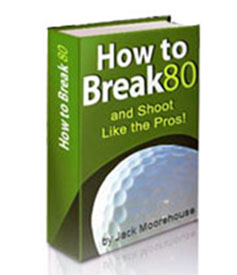
eBook
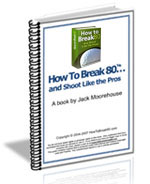
Physical Book
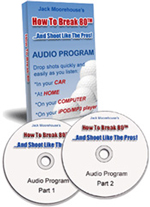
Audio Program
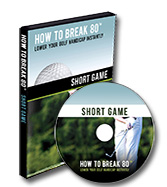
Short Game DVD
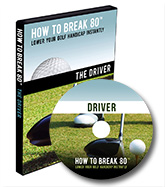
Driver DVD
|